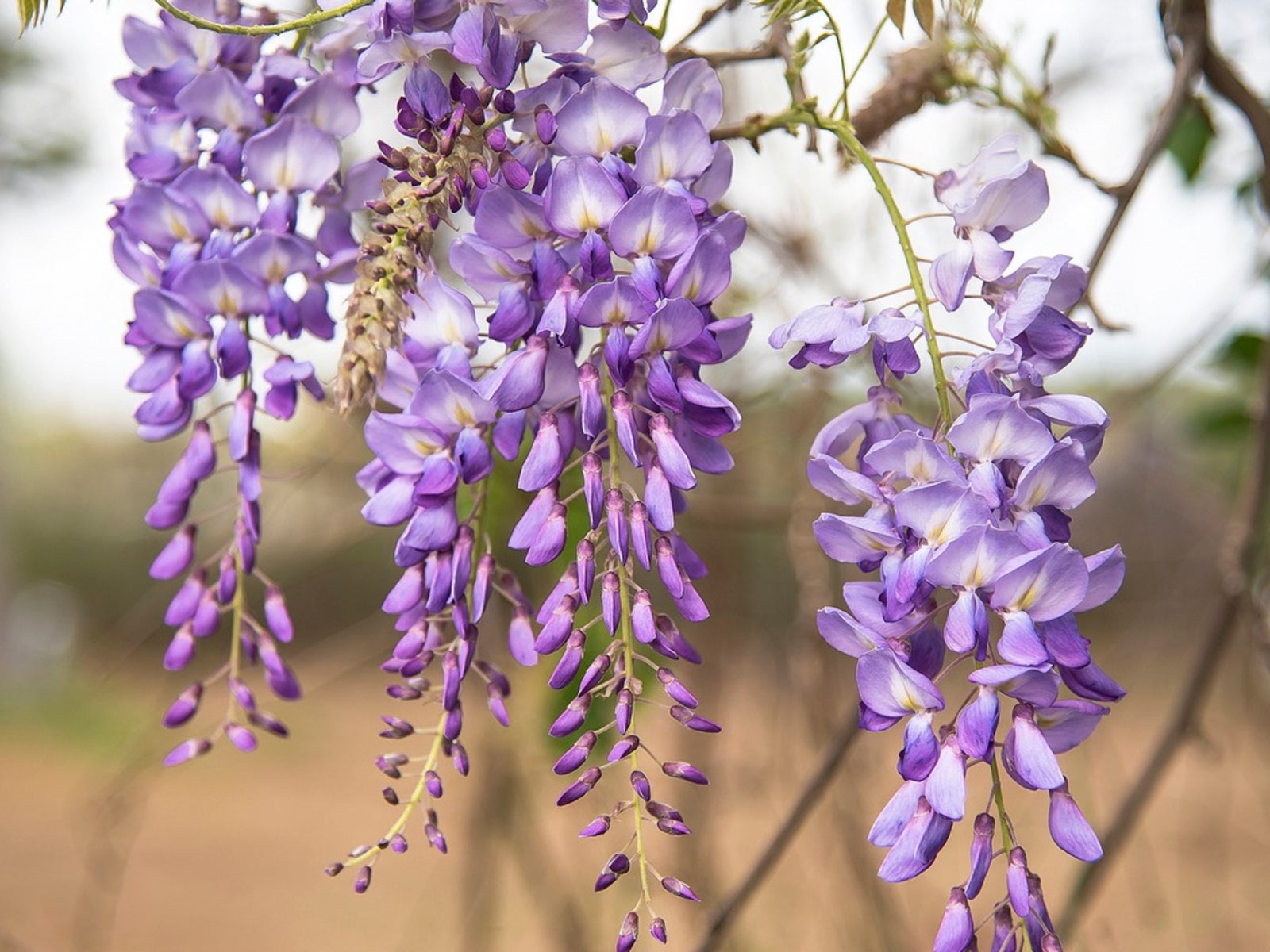Transplanting Wisteria Suckers: Can You Plant Wisteria Offshoots


Wisteria plants are graceful vines grown for their dramatic and fragrant purple flowers. There are two species, Chinese and Japanese, and both lose their leaves in the winter. If you own a wisteria plant and you love and want another, you won’t have to spend a dime. Keep your eye out for sucker plants growing from the living root of your vine, then read up on wisteria sucker transplant tips. Read on for information about transplanting wisteria suckers.
Can You Plant Wisteria Suckers?
Plants propagate in different ways. Some, like the wisteria vines, send up offshoots called “suckers” from their underground roots. If you allow these suckers to grow, they form a close-knit hedgerow. Can you plant wisteria offshoots? Yes, you can. In addition to propagating wisteria seeds or cuttings, you can dig up suckers and use them as young wisteria plants ready for a new home. Moving wisteria shoots is not difficult if you know how and when to do it.
Moving Wisteria Shoots
Suckers are not difficult to dig up and transplant. The best time to transplant your wisteria suckers is in late winter or early spring before bud break. Before you start removing a sucker, however, you should prepare the planting location. Pick a spot that gets at least six hours a day of sunlight. Dig out a hole for each sucker. The hole should be 2 feet (0.5 m.) across and 2 feet (0.5 m.) deep. Fill it with water and let it drain through. Then mix well-rotted compost into the soil. Pick a healthy sucker that is between one and two feet (0.5 m.) tall. Push your shovel into the area between the mother plant and the sucker. Sever the root holding the two together, then carefully pry out the sucker and its root ball. Gently remove any weeds that are on the sucker dirt. When transplanting wisteria suckers, place the root ball into the planting hole, adding soil on the bottom of the hole to make sure that the top of the root ball is level with the soil. It’s important to plant the wisteria shoot to the same depth as it was originally growing. Tuck the amended soil into the hole around the sucker. Pat it into place to eliminate air pockets. Then give the wisteria vine a generous drink of water. Keep the soil moist the first year after planting.
Gardening tips, videos, info and more delivered right to your inbox!
Sign up for the Gardening Know How newsletter today and receive a free copy of our e-book "How to Grow Delicious Tomatoes".

Teo Spengler is a master gardener and a docent at the San Francisco Botanical Garden, where she hosts public tours. She has studied horticulture and written about nature, trees, plants, and gardening for more than two decades. Her extended family includes some 30 houseplants and hundreds of outdoor plants, including 250 trees, which are her main passion. Spengler currently splits her life between San Francisco and the French Basque Country, though she was raised in Alaska, giving her experience of gardening in a range of climates.
-
 Looking For Plants To Give You The Soft And Fuzzies? Try These 5 Fuzzy Leaf Plant Options
Looking For Plants To Give You The Soft And Fuzzies? Try These 5 Fuzzy Leaf Plant OptionsLovers of texture, drama, silver foliage and tactile plants will adore these special sensory garden additions. These fuzzy leaf plant options will leave you all aglow
By Susan Albert
-
 Get Ready For A Summer Of Hummers! Grow These Full Sun Hummingbird Plants and Flowers
Get Ready For A Summer Of Hummers! Grow These Full Sun Hummingbird Plants and FlowersIf you’re lucky enough to enjoy a sunny backyard, make sure you are maxing out on your pollinator opportunities and grow these full sun hummingbird plants and flowers
By Tonya Barnett